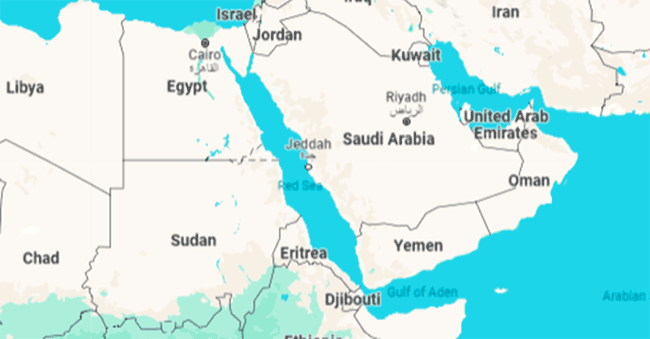According an article in the Wall Street Journal, ocean carriers diverting routes from the Red Sea to avoid the risk of so-called Houthi militants have helped push up container freight rates by about 30% in the past couple of weeks.
Supply Chain Digest Says... |
 |
|
| The rate hikes, however, are something of a salvation for container carriers. Many of them raised their yearly outlooks in their Q1 earnings reports. |
|
 |
|
What do you say? |
|
| Click here to send us your comments |
|
| |
|
| Click here to see reader feedback |
|
|
|
Those already rising costs in ships that would have used the Red Sea to reach or exit the Suez Canal will soon meet rising volumes for the 2024 peak season, which generally also pushes container rates higher.
The Journal reports that carriers and brokers say nine out of 10 large container ships are diverting from the Red Sea on their way from Asia to Europe, after the on-going attacks by Iran-backed Houthi rebels since November.
In normal times, the Suez Canal handles about 15% of world shipping traffic, and under that roughly 30% of global container shipments.
With the risk and rising insurance costs for ships using the Red Sea routes reachable by Houthi missiles, many of those container and bulk ships are now diverting to sail around the Cape of Good Hope in South Africa, which adds at least two and a half weeks to the journey versus the Suez route.
Costs of transpacific routes are also rising. Costs to ship a container from China to a US West Coast ports has increased to about $4,500, up from $3,100 or so at the end of April.
Rates from China to Europe rose to about $3,800 this past week from $2,750 last month.
That as demand has recently been relatively strong.
The National Retail Federation reported in early May that the top dozen US ports handled 1.96 million containers in April, up 10% compared with a year ago and 2% from March.
(See More Below)
|
CATEGORY SPONSOR: SOFTEON |
|
|
|
|
|
That, the Journal notes, foretells a strong upward trend for imports in Q3, the busiest months for shipping as retailers stock up for peak season consumer and retailer demand.

The rate hikes, however, are something of a salvation for container carriers. Many of them raised their yearly outlooks in their Q1 earnings reports, after previously warning of steep losses over the next two years as dozens of new ships come into service, yet again creating an excess of capacity in the sector.
“We expect the Red Sea diversions to continue for the rest of the year and volumes are coming in stronger than anticipated,” Vincent Clerc, CEO of Danish-shipping carrier A.P. Moller-Maersk, said in an interview with the Journal, adding that. “All shipping lines have adjusted their networks around Africa more or less permanently.”
What are your thoughts on rising rate? Let us know your thoughts at the Feedback section below.
Your Comments/Feedback
|

